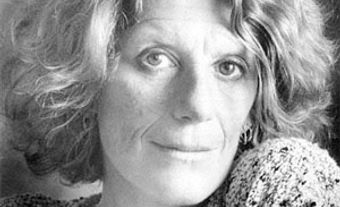Anne Elizabeth (Grubbe) Haviland assembled the earliest known collection of botanical specimens in Prince Edward Island. The collection is now housed in the Herbarium at the Royal Botanic Gardens in Kew, England. She married Thomas Heath Haviland, one of the Fathers of Confederation and lieutenant-governor of Prince Edward Island (1879–84).
Early Life and Emigration
Anne Elizabeth Grubbe was born in Horsenden House, a stately home in the vale of Aylesbury, Buckinghamshire, acquired by one of her ancestors in the mid-17th century. Anne was one of 13 children of John Grubbe and Sarah Anne Carrington, members of England’s landed gentry (landowning upper class). Little is known of Anne Grubbe’s education, but her upbringing in rural Buckinghamshire may have sparked an interest in the natural world.
In 1841, John Grubbe immigrated to Prince Edward Island with Sarah Anne, seven of their children, including 23-year-old Anne, a housekeeper and eight servants. The Grubbes were among the wealthiest landowners on the Island. In 1842, Grubbe purchased 280 acres of land on the Hillsborough River and commissioned a stately home, called Falcon Wood and established himself as a gentleman farmer. Along with her mother and sisters, Anne joined the Ladies Benevolent Society, which raised money for the poor on the Island.
Marriage
In 1846, John Grubbe died when an outbreak of “dysentery or a species of cholera” (according to the Charlottetown Islander) struck the Island. Sarah Anne and her children remained on the Island for a few more years but eventually returned to England. Unlike her mother and siblings, Anne Elizabeth stayed after she married Thomas Heath Haviland, a lawyer from one of the Island’s most prominent political families, in 1847. While records vary, they had as many as nine children, two of whom did not survive to adulthood. Like the Grubbes, the Havilands came from the English landed gentry and were part of the conservative “family compact” that dominated Island land ownership (see PEI Land Question).
Botany
During the late 18th and early 19th centuries, making collections of carefully labeled objects from the natural world such as dried flowers, shells, butterflies and fossils was considered a suitable pastime for upper-class women. For people interested in botany who immigrated to Canada, the landscape provided plenty of material for collections. There were already prominent female botanists in British North America at the time of Grubbe’s arrival, including Catharine Parr Traill, author of The Backwoods of Canada (1836).
Anne Elizabeth Haviland’s collection dates from the early years of her marriage, between 1849 and 1854. She gathered her specimens on the grounds surrounding Falcon Wood and other country homes on the Island. The plants in her collection include the rhodora shrub (a rhododendron), prevalent in damp regions of eastern North America, the sheep laurel shrub, the dogwood tree, two species of wintergreen, four species of ground pine (or creeping cedar), one flowered wintergreen and a trailing arbutus (or mayflower).
When the Botanical Society of Canada was founded in 1860, the founder, Dr. George Lawson, remarked in his opening address, “We already have observers from Red River in the West to Prince Edward Island in the East,” which may have been a reference to Haviland. It is not known whether Haviland continued to collect botanical specimens later in her marriage, as her social responsibilities increased with the advancement of her husband’s political career.
Confederation and Later Life
Anne Elizabeth Haviland’s husband enjoyed a long political career, serving in the legislature for 30 years, from 1846 to 1876. He became one of the Fathers of Confederation, a member of the Senate of Canada from 1873 to 1879 and the province’s third lieutenant-governor from 1879 to 1884. As the wife of one of the most prominent political figures of the province, Haviland acted as a society host and philanthropist. As the consort of the lieutenant-governor, Haviland was described as presiding over Government House with “taste, grace and dignity, proving a charming hostess.” Thomas Heath Haviland died in 1895. Anne Haviland outlived him by seven years, living in Alma Cottage in Charlottetown until her death in 1902.
Legacy
Anne Elizabeth Haviland’s botanical collection was transported to England by one of her relatives during her lifetime, possibly her niece Julia Grubbe, who collected specimens in Southwold, England. It is also possible that Haviland herself left the collection with her relatives when she visited them. The collection was lost until her great-grandniece Margaret Grubbe rediscovered it during the Second World War when the family home in Southwold, Park Villa, was requisitioned as an army storehouse and the contents were packed up and removed. Margaret donated the collection to the Royal Botanic Gardens in Kew (better known as Kew Gardens), London, where her friend M.M. Whiting volunteered. Kew Gardens is a world-renown scientific, conservation and horticultural research centre. Whiting published a paper in the Kew Bulletin in 1948 announcing the significance of Haviland’s collection, noting that “after careful enquiries in every quarter, no trace can be found of anything earlier from Prince Edward Island.” Haviland’s specimens remain the oldest known botanical collection from Prince Edward Island.

 Share on Facebook
Share on Facebook Share on X
Share on X Share by Email
Share by Email Share on Google Classroom
Share on Google Classroom


